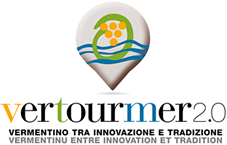'The Val di Cornia is a distinct area within the Maremma area. Situated at the southern end of the Province of Livorno, its borders are defined by the River Cornia. The metalliferous hills frame the valley where olive groves and vineyards are cultivated. The coastline is characterized by sandy beaches, interrupted only by the promontory of Piombino, which is easily recognized by its high rocky cliffs. This land, which up until the last century was built upon ponds and coastal marshes, is today of great environmental and cultural importance. The village of Campiglia Marittima has a beautiful view of the valley. The old town retains the atmosphere of the medieval village and bears the marks of the powers that have come and gone over the centuries, as shown on the façade of the Praetorian Palace, with its many coats of arms from the XV-XVI centuries. Outside the town, in an isolated position near the cemetery, stands the beautiful church of San Giovanni. This site has links with the history of the exploitation of the rich mineral resources of the territory; in fact on the road between San Vincenzo Campiglia, you can find the Archaeological Park of San Silvestro and its fortress. There is also a medieval village built by miners and foundry workers, and numerous hiking trails that make this park a real open-air archive with evidence of life from the Etruscan period to the present day.
The town of St. Vincent can be found on the coast. This seaside tourist resort, situated in a narrow strip of coastline near Rimigliano Coastal Park, consists of a hundred and fifty acres of white sand and scrub land, sculpted by the sea winds and dominated by oak and pine forest. Moving towards Piombino you reach the Gulf of Baratti; over the gulf is the village of Populonia, the only Etruscan town on the sea.
Here we can find the Archaeological Park of Baratti and Populonia, which houses an extensive collection of exhibits from the ancient Etruscan civilization which developed due to the processing of iron ore from the Island of Elba. The city's name derives from Fufluns, the Etruscan name of the God of wine. Situated on high ground in the valley, is the Acropolis where the Etruscans buried their dead. Over the centuries, this turned into a vast burial ground with interesting examples of tombs form various historical periods.
Not far from the Acropolis stands the medieval village of Populonia Alta, where we find the castle built by the Gasparri Appiani and the small museum, which houses a private collection of Villanova, Etruscan and Roman archaeological finds. Today, Piombino continues the tradition of the steel industry and is well known for its factories. It is a small but very characteristic town with hidden historical, monumental and artistic aspects.
A 13th century tower marks the entrance to the historic centre together with the adjacent semicircular Rivellino military fortification built into the ancient walls during the 15th century. In the northern part of town you can visit the Citadel, a group of buildings including the Palace of the Appiani who were lords of the State of Piombino, which remained independent until the French invasion.The Archaeological Museum of Populonia can now be found inside this building.
To the south-east of the city is the Sterpaia Coastal Park, a typical area of the Maremma region with dunes, wetlands and woodlands, and many hundred year old trees. The innermost part of the Val di Cornia includes the towns of Suvereto and Sassetta Livorno and the Pisan municipality of Monteverdi. Suvereto is one of the most ancient towns in the Tuscan Tyrrhenian belt and is considered to be one of the most beautiful villages in Italy. Suverto’s most striking buildings are the ruins of the 10th century fortress, the Town Hall and the 13th century Cloister of San Francesco.
The small town of Sassetta is a fascinating network of narrow streets, but even more fascinating are the walks in the surrounding woods. Explore the paths of the Forest Park of Poggio Neri, where you can find the Museum of the Wood with a detailed reconstruction of the world of these coal workers. On the border between the Val di Cornia and the Cecina river basin is Monteverdi Marittima, a town of feudal origin, an isolated yet enchanting town set among the mountains with Romanesque architecture.
















